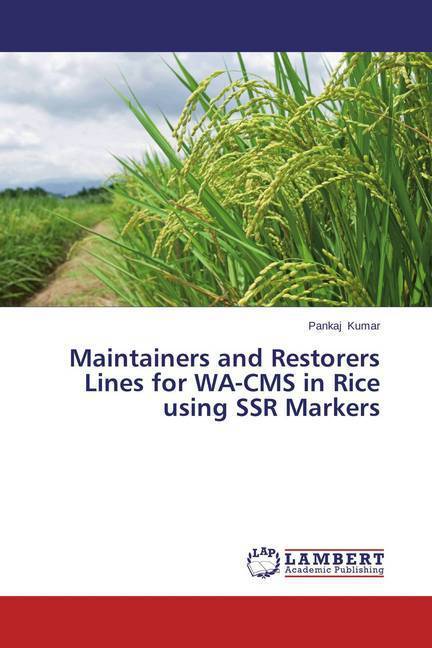
Je cadeautjes zeker op tijd in huis hebben voor de feestdagen? Kom langs in onze winkels en vind het perfecte geschenk!
- Afhalen na 1 uur in een winkel met voorraad
- Gratis thuislevering in België vanaf € 30
- Ruim aanbod met 7 miljoen producten
Je cadeautjes zeker op tijd in huis hebben voor de feestdagen? Kom langs in onze winkels en vind het perfecte geschenk!
- Afhalen na 1 uur in een winkel met voorraad
- Gratis thuislevering in België vanaf € 30
- Ruim aanbod met 7 miljoen producten
Zoeken
Maintainers and Restorers Lines for WA-CMS in Rice using SSR Markers
Pankaj Kumar
Paperback | Engels
€ 70,45
+ 140 punten
Omschrijving
Using a set of 34 SSR primer pairs, simple sequence length polymorphism was examined in a set of 8 effective restorers, 4 partial restorers, 2 weak maintainers and 4 complete maintainers in order to characterize them and to determine the nature and extent of differentiation and divergence among them at the molecular level. A method was adopted for optimization of PCR based amplification reaction in which the concentrations of primers and template were arranged in an orthogonal array. Each component occurred at one of the three predetermined levels, each of which occurred at an equal number of times within the orthogonal array and a suitable condition for amplification was finally achieved. Amplification was successfully achieved with all the primer pairs. Polymorphism was recognized on the basis of presence or absence of bands, besides variation in number and position of bands. Altogether 266 allelic variants were detected at 47 SSR loci with an average of 5.66 alleles per locus. In general, the SSR loci with dinucleotide and trinucleotide repeat motif tended to detect greater number of allelic variants than loci with tetranuclotide repeat motifs.The markers with GA, AT, AC and CT.
Specificaties
Betrokkenen
- Auteur(s):
- Uitgeverij:
Inhoud
- Aantal bladzijden:
- 152
- Taal:
- Engels
Eigenschappen
- Productcode (EAN):
- 9783659612251
- Verschijningsdatum:
- 24/09/2014
- Uitvoering:
- Paperback
- Afmetingen:
- 150 mm x 220 mm
- Gewicht:
- 231 g

Alleen bij Standaard Boekhandel
+ 140 punten op je klantenkaart van Standaard Boekhandel
Beoordelingen
We publiceren alleen reviews die voldoen aan de voorwaarden voor reviews. Bekijk onze voorwaarden voor reviews.









